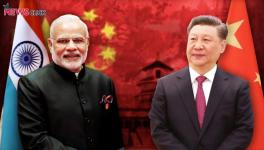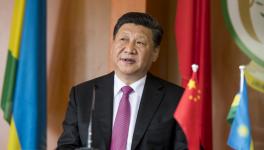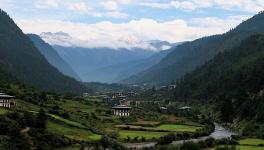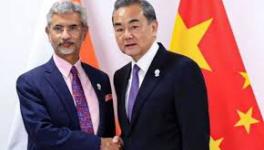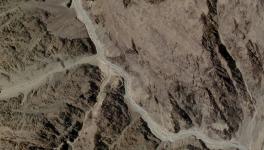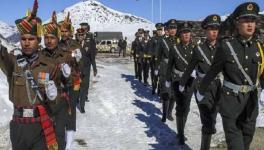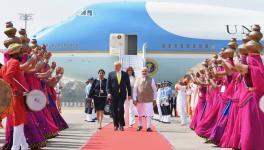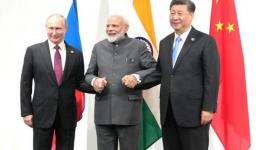A Reporter’s Account of India’s China Narrative
Ananth Krishnan’s new book, India’s China Challenge: A Journey through China’s Rise and What it Means for India, published by Harper Collins in 2020, is an outstanding and courageous work. It examines the challenges that independent India faces from post-revolutionary China.
The author was the correspondent in China for The Hindu newspaper from 2009 to 2018. He learnt Mandarin there and reported extensively on developments in the country. He confesses his book mainly offers the perspective of an on-ground reporter, informed mostly by interviews with people. Accordingly, a number of top Chinese officials, key points-men including those on India affairs in China, boundary negotiators in both countries, political leaders, and senior Indian officials figure in the book, all of whom he met while on the job.
Due to its wealth of detail from first-hand interviews, the book’s publication, especially at a time of a sharp and avoidable deterioration of relations between the two countries, should impel Indian policy-makers to pay serious attention.
The author notes that India has grossly underinvested in understanding China, “its most important neighbour”. This, he finds, has happened at every level: the media, the business community and the government. In 2018, when the author left Beijing, there were only four Indian reporters based in China. “There wasn’t a single television channel from India that had set up a China bureau—not that this stopped them in any way from holding forth every night on the topic,” he writes in the introduction, referring to the fact that almost every European country, big or small, has reporters in Beijing. Additionally, Indian correspondents can only marvel at the resources other foreign correspondents have at their disposal to pursue stories in China. If language is a barrier, India has not done much to surmount it, the author found during his decade spent in Beijing. He reports the central challenge in writing this book as the difficulty in capturing the diversity of more than a billion voices and wrapping up their complexities.
The benefit is that the book does not present a “tidy argument” to capture the many rapid changes unfolding in China. Nor is it a “definitive history” of the country’s political and economic changes over the last decade. The aim, instead, is to present perspectives the author encountered during his decade in the country, while keeping the Indian point of view in mind. Of this, he has done a splendid job.
In its 422 pages, the book provides a comprehensive discussion on key developments in contemporary China. It has a strong focus on the unresolved boundary dispute between India and China and the 1962 war. It raises several un-asked questions about this war and its historical and political background in chapters 12, 13 and 14. It calls for a proper accounting of India’s role in the conflict and on the lessons learnt.
Chapter 10 provides an illuminating discussion of the context to the military stand-offs at Doklam in 2017 and the recent clashes at Galwan Valley in Ladakh. Chapter 8 discusses “competition and collaboration” with India; followed by “Where China meets India”. There are also important discussions on the “China-Pakistan Nexus”, the “Ghosts of 1962” and, importantly, on the “Case for Settling” the boundary dispute.
In part I, the author considers the political challenges of dealing with the rise of a one-party state in China. He captures the persistence of the legacy of Chairman Mao, the rise of Xi Jinping and its impact on the country, including the centralisation of power in the hands of the Communist Party of China and the role of the recent Novel Coronavirus pandemic. The prevailing battles of ideas and ideology in Chinese politics are also referred to in the first three chapters.
In Part II, the author examines China’s unique growth story, noting an increasingly lopsided economic relationship arising from Indian dependencies on Chinese manufacturing prowess, especially in the wake of the pandemic. He examines in some detail China’s manufacturing miracle and its supply chains, which have become integral to the Indian economy. Urbanisation has transformed the Chinese economy and lessons must be learnt from both the promises and perils of its experience. Looking at the emergence of “Tech China”, the author notes the contradictions of an innovation power that is bound by “suffocating systems of censorship and surveillance, as well as the growing reliance on technology as a driver of both growth and governance—another trend the pandemic has hastened”.
Part III examines the difficult diplomatic and military challenges India faces. An increasingly assertive and confident China under Xi looks to play an even greater role on the world stage. He gives an account of the complicated India-China relationship dynamic, which is increasingly tilting towards competition rather than cooperation. In the important chapters 9, 10 and 11, the author assesses “Where China Meets India”, the India-China boundary dispute (“From Doklam to Galwan”) and the deepening “China-Pakistan Nexus”.
The three following chapters examine the 1962 border conflict and underlines the need to settle this inherited problem in a pragmatic manner, keeping in mind better the interests of both countries. Chapters 15 to 17 examine China’s restless “frontiers”—Tibet, Xinjiang and Hong Kong. India must assess the challenges in these frontier states and arrive at a balanced understanding of a less confident and less assured China. India has to re-examine some of its deeply-held ideas on the China model, its understanding of why China has become an economic success, the nature of its boundary dispute with China and, therefore, the real meaning of the 1962 border conflict.
Part VI profiles six Chinese who have defied convention. These apparently disconnected portraits reveal surprising links to India. The Epilogue makes a marvellous analysis of the implications of China’s experience in dealing with the Coronavirus pandemic.
The book is entirely educative for an Indian reader and full of information and unprecedented analyses. They allow the non-specialist reader to access useful information and analyses on China in one place, which are not easily available in India. The obviously brilliant author has spent a long time in an intriguing country, and this helps readers avoid simplistic accounts and arrive at a balanced understanding of the People’s Republic of China.
In chapter 12, the author discusses the rival positions of the two countries on Aksai Chin and the McMahon Line, and observes that the two sides missed a golden opportunity in 1960 to resolve the border dispute when Premier Zhou Enlai had visited India for discussions with Prime Minister Jawaharlal Nehru with a “package proposal”. The leaders of India, a Westphalian state, and China, a post-revolutionary state, met several times. Though China was willing to compromise on a package deal their dispute, the Indians proved rigid. The author points out many limitations in the Indian approach right from Jawaharlal Nehru’s time to the present and calls for India to undertake a dispassionate public accounting of its own historical role in the border dispute and the causes of the 1962 conflict.
The Henderson-Brooks Report, never placed in the public domain, is quite revealing, as the author candidly points out. For instance, the role of then intelligence chief, who kept repeating in the meetings of the Cabinet Committee on Security that China would never respond with force to India’s probing missions through its Forward Policy along the China-India border areas, as noted in the Henderson-Brooks Report. He was never held to account despite the violent consequences of his advice, which, apparently, the Prime Minister did not question.
The author notes the problem can only be resolved if there is a public reckoning in India of both the history of the boundary dispute and events that led to the war, including introspection on actions that led to 1962, overcoming the “simplistic narratives that continue to maintain a tight grip over the public imagination”.
The book needs an index and a suitable map of China. This immensely valuable study must be translated into all Indian languages, especially Hindi.
The author is a scholar and former senior civil servant. The views are personal.
Get the latest reports & analysis with people's perspective on Protests, movements & deep analytical videos, discussions of the current affairs in your Telegram app. Subscribe to NewsClick's Telegram channel & get Real-Time updates on stories, as they get published on our website.










